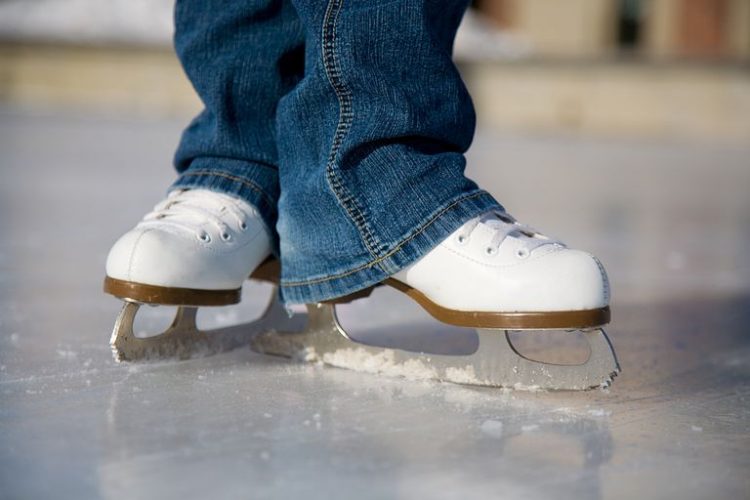Ice skating is a sport that can be learned by people of any age or skill level. As popular as it is, sometimes it isn’t easy to find the time, place or money to do it as often as you’d like. Learning the proper technique can be done through established local sports schools that have the necessary facilities, but in between lessons, what should you do to practice outside the rink?
Dryland or off-ice training refers to activities and exercises that allow individuals to improve their skills or strengthen parts of their bodies outside the skating rink.
Benefits of off-ice training exercises
Here are a few benefits for doing dryland training for ice skaters looking to improve:
Quicker progression
People who have an innate talent in skating will learn the basics quickly. However, natural talent can only take you so far.
Once you reach a certain level, some physical aspects become more important. Your body needs to have the strength and flexibility to perform the more difficult spins and multiple jumps. On the other hand, endurance is required to handle the physical demands of a longer program.
Strengthening specific areas of the body
Achieving a skater’s body is only possible with the right types of exercises. Much like in other sports, coaches carefully select exercises that develop specific areas. For instance, lunges and one-leg squats are recommended for strengthening the upper leg muscles.
Proper execution is key to targeting specific body parts. Going back to the example of squats, the distance between your feet can affect which area of the leg you want to develop further. When strengthening the inner thighs, for example, you will need a wider squatting stance while a narrower stance will target your outer thighs.
Better skating form
Coaches will consistently watch your form to ensure that you are executing each move correctly. This is also to ensure that you perform the steps safely.
By complementing your ice skating lessons with recommended dryland exercises, you will be in a better position to perform ice skating moves. You will know when to apply speed or power or where to shift your weight while skating.
Ideal attributes of ice skaters
There are certain physical qualities an ice skater should have in order to excel in ice skating. They are as follows:
High level of balance
Ice skating may look easy to non-skaters, but it is not. The best skaters need to have impeccable balance as they have to perform almost every move on one leg.
Three factors affect our notion of balance: the inner ear, our eyes, and feet. The inner ear is especially useful in sensing the body’s relationship to other elements while the individual is in motion. Skaters need a clear vision to see the surrounding elements, while the feet’s receptors provide an estimate of the distance between the body and the ground.
Even if you’re not naturally blessed with great balance, it can improve with the right exercises. Weighted squats, one-leg squats, and lunges are a few exercises that you can do to improve your balance.
Developed core strength
The core muscles include areas of the abdomen and the back. These areas have an essential role in keeping the body stable and balanced while jumping, spinning, and performing crossovers. Without adequate core strength, you won’t be able to perform skating movements with the necessary level of consistency to succeed.
Overall muscle strength
Skaters may typically have slim frames, but they have a lot of muscle strength. Beyond the core, leg strength and power are next in importance. Without any force or power in the legs, skaters won’t be able to move or spin with speed.
Coaches will often require skaters to perform the same move numerous times before they get it right. Repeating the same movements and making the spins tighter require a lot of strength and power from skaters. Furthermore, having a lot of leg strength allows the skater to make higher jumps and safer landings.
Muscle strength also affects one’s endurance level, a key attribute skaters need to have to become successful. Without endurance, a skater won’t be able to perform consistently throughout the program or fully complete the practice session.
Incredible flexibility
Splits, spread-eagles, spirals, and some types of spins require not just strength but also flexibility. With flexibility, you can control the direction and the angle of your hips, knees, ankles, feet, and the rest of your leg when you perform your move. These allow you to take off and land with precision and reduce your chances of getting injured.
Whether you are a competitive figure skater, a professional hockey player, or just starting out in ice skating, you can benefit from dryland training. It is a great way to practice moves while developing your body for the rigors of the activity. Talk to your skating coach if you are interested in taking it up during off-season to see what options are available for you.
AUTHOR BIO
Possessing more than two decades of experience in the leisure and hospitality industry, Tony Kouris joined Zayed Sports City as General Manager in January 2018. With extensive career experience, a value on interpersonal relationships, and strong negotiating experience, he is positioned to support Zayed Sports City’s strategic growth and continue to innovate the site as an internationally recognised sport and entertainment destination.


